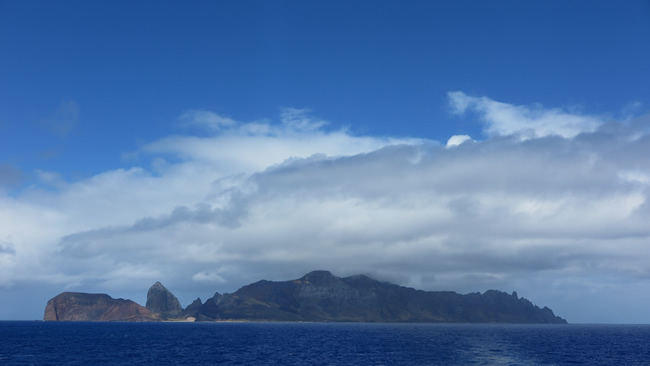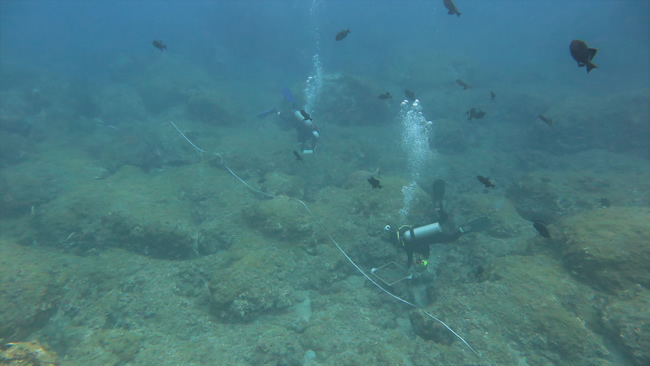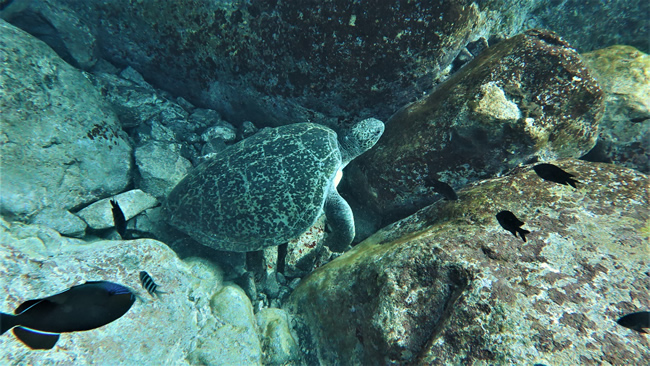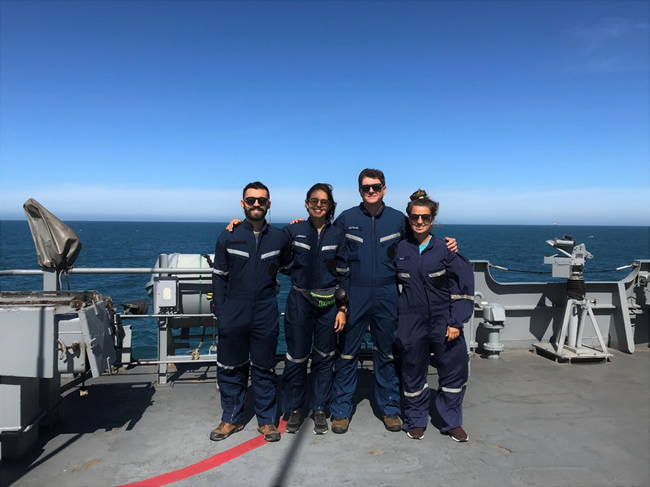|
Expedition: Trindade Island (20º 31' 30" S, 29º 19' 30'' W)
Away 1200 km from Vitória/ES (Brazil’s southeast coast), Trindade Island was the destination of another expedition
of the long-term monitoring program of the Brazilian oceanic islands PELD-ILOC. It was the 5th expedition
conducted by our group to the Trindade and Martin-Vaz complex, the eastern tips of the Vitória-Trindade seamount
chain, an isolated and unique ecosystem from Brazil. This year, the team was composed by the four researchers
Ph.D. Gabriel Cardozo-Ferreira (LECAR), Ph.D. Anderson Batista (UFES), M.Sc. Larissa Benevides (UFAL) and B.S.
Thais Macedo (UFSC).
During the expedition, a series of activities were developed aiming to assess and monitoring different aspects in
the island’ marine ecosystem, such as: reef fish assemblage, benthic cover composition, health status of
Montastrea cavernosa coral colonies, population structure of the Aratu crab (Grapsus grapsus), and the structure of
the sea urchin assembly. Moreover, the team also collected data other than the related to the monitoring itself but as
part of ongoing researches related to PELD, for example, like samples of different coral species for DNA purposes,
calcareus algae for molecular biology and fish specimens for trophic ecology studies.
The whole trip was supported by the Brazilian Navy, from transport to the island to field support in the island.
Trindade keeps the usual weather with scattered rains almost every day, but also bright sunny which helped us
during all the dives, illuminating the incredibly blue water with its beautiful and diverse marine community (and
warming us in the surface intervals and after the dives). Humpback whales sightenning was constant from the
island and boat as well as their singing underwater. We were also able to see reef sharks, lots of barracudas,
different colourful reef fish species, dolphins and hawksbill and green turtles. We’re back but already looking
forward to the next expedition! See you soon, Trindade!
Distante 1200 km da costa de Vitória/ES (costa sudeste do Brasil), a Ilha da Trindade foi o destino de mais uma
expedição do programa de monitoramento das ilhas oceânicas brasileiras PELD-ILOC. Esta foi a quinta expedição
conduzida pelo nosso grupo ao complexo recifal Trindade e Martin-Vaz, os pontos mais extremos da cadeia de
montanhas submarinas Vitória-Trindade, um ecossistema isolado e único no Brasil. Este ano equipe PELD-ILOC
foi composta por quatro pesquisadores: Ph.D. Gabriel Cardozo-Ferreira (LECAR), Ph.D. Anderson Batista (UFES),
M.Sc. Larissa Benevides (UFAL) e B.S. Thais Macedo (UFSC).
Durante a expedição, uma série de atividades foram desenvolvidas com o objetivo de monitorar diferentes
aspectos do ecossistema marinho da ilha, como: assembleia de peixes recifais, composição da cobertura
bentônica, status de saúde das colônias do coral Montastrea cavernosa, estrutura populacional do caranguejo
aratu (Grapsus grapsus), e a estrutura da assembleia de ouriços. Além disso, a equipe também coletou outros
dados para pesquisas correlacionadas ao PELD, por exemplo, coleta de amostras de diferentes colônias de coral
para análise de DNA, algas calcáreas para biologia molecular e espécimes de peixes para estudos de ecologia
trófica.
Toda a viagem teve o suporte da Marina do Brasil, desde o transporte até a ilha até o apoio nas amostragens na
própria ilha. Trindade continua com seu clima típico, com chuvas esparsas quase todos os dias, mas também
muito sol que nus ajudou durante os mergulhos iluminando a sua água incrivelmente azul com sua bela e diversa
comunidade (e nos aquecendo nos intervalos de superfície e após os mergulhos). Baleias jubartes foram
avistadas constantemente fora a partir da ilha e do bote, assim como seu canto foi ouvido durante os mergulhos.
Nós também pudemos ver tubarões de recifes, barracudas, diferentes espécies coloridas de peixes recifais,
golfinhos e tartarugas verde e de pente. Estamos de volta, mas já ansiosos pela próxima expedição. Nos vemos
em breve, Trindade!

Trindade Island. Photo: G. Cardozo-Ferreira

Team members Larissa Benevides and Thais Macedo conducting photoquadrats from benthic community and
sea-urchin population assessment. Photo: G.Cardozo-Ferreira

Green turtle Chelonia mydas. Photo: L.J. Benevides

Expedition team from left to right: Gabriel Cardozo-Ferreira, Larissa Benevides, Anderson Batista and Thais Macedo. |









